Archives
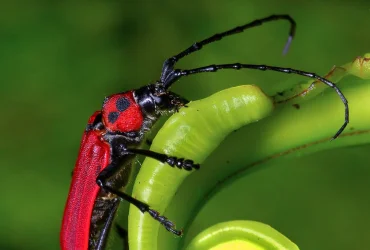 v5i1.85
v5i1.85ISSN: 1800-427X (print)
eISSN: 1800-427X (online)
DOI:10.47605/tapro.v5i1.85
Submitted date: 1 November 2012
Accepted date: 21 April 2013
Published date: 15 June 2013
Pp. 12–18.
GASTROPOD SHELL UTILIZATION PREFERENCES OF HERMIT CRAB Clibanarius zebra (DANA, 1852) (DIOGENIDAE: ANOMURA)
J.N. Trivedi, S. Arya & K. D. Vachhrajan*
*Corresponding author. E-mail: kauresh@gmail.com
Abstract
The aim of the present study was to characterize the patterns of gastropod shell utilization by the hermit crab Clibanarius zebra from four different sites along the Saurashtra coast, Gujarat state, India. A total of 404 individuals of hermit crab were captured (223 males, 147 females and 34 ovigerous females), occupying 22 species of gastropod shells. Maximum species diversity of shells occupied by the crab was observed at Veraval. Amongst all the shell species identified, Cerithium scabridum (36.88 %) was highly occupied by the crab species followed by Astra stellata (11.39 %), Turbo intercostalis (10.64 %), Cerithidia cingulata (9.16 %) and Lunella coronata (7.43 %). Males of C. zebra utilized a wide range of shell species (21 species), while non ovigerous females (13 species) and ovigerous females (7 species) use a specific set of gastropod shell species. The density of live common shell species occupied by C. zebra was also calculated and results revealed that the density of C. scabridum was very high in the intertidal zone compared to other gastropods. This indicates that density of shells may influence the utilization of shells by C. Zebra.
Key words : Saurashtra coast, gastropod shell density, shell occupancy, India
Section Editor: Michelle Wait
eISSN: 1800-427X (online)
DOI:10.47605/tapro.v5i1.85
Submitted date: 1 November 2012
Accepted date: 21 April 2013
Published date: 15 June 2013
Pp. 12–18.
GASTROPOD SHELL UTILIZATION PREFERENCES OF HERMIT CRAB Clibanarius zebra (DANA, 1852) (DIOGENIDAE: ANOMURA)
J.N. Trivedi, S. Arya & K. D. Vachhrajan*
*Corresponding author. E-mail: kauresh@gmail.com
Abstract
The aim of the present study was to characterize the patterns of gastropod shell utilization by the hermit crab Clibanarius zebra from four different sites along the Saurashtra coast, Gujarat state, India. A total of 404 individuals of hermit crab were captured (223 males, 147 females and 34 ovigerous females), occupying 22 species of gastropod shells. Maximum species diversity of shells occupied by the crab was observed at Veraval. Amongst all the shell species identified, Cerithium scabridum (36.88 %) was highly occupied by the crab species followed by Astra stellata (11.39 %), Turbo intercostalis (10.64 %), Cerithidia cingulata (9.16 %) and Lunella coronata (7.43 %). Males of C. zebra utilized a wide range of shell species (21 species), while non ovigerous females (13 species) and ovigerous females (7 species) use a specific set of gastropod shell species. The density of live common shell species occupied by C. zebra was also calculated and results revealed that the density of C. scabridum was very high in the intertidal zone compared to other gastropods. This indicates that density of shells may influence the utilization of shells by C. Zebra.
Key words : Saurashtra coast, gastropod shell density, shell occupancy, India
Section Editor: Michelle Wait
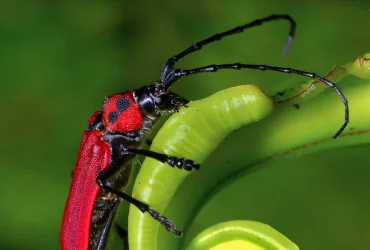 v5i1.84
v5i1.84ISSN: 1800-427X (print)
eISSN: 1800-427X (online)
DOI:10.47605/tapro.v5i1.84
Submitted date: 28 August 2012
Accepted date: 25 January 2013
Published date: 15 June 2013
Pp. 6–11, Pls. 1–2.
FIRST DESCRIPTION OF FEMALE Plesiophrictus millardi POCOCK, 1899 (ARANEAE: THERAPHOSIDAE)
Rajesh V. Sanap* & Zeeshan A. Mirza
*Corresponding author. E-mail: rajeshvsanap@gmail.com
Abstract
The genus Plesiophrictus Pocock (1899) was described when found in Matheran to embody P. millardi. This species was described based on a male specimen, but the female remained unknown for more than a century. Recent surveys conducted in the known range of the species resulted in the discovery of the female, which is herein described for the first time.
Key words : Arachnida, spiders, tarantula, taxonomy, biodiversity, India
Section Editor: Dimitar Dimitrov
eISSN: 1800-427X (online)
DOI:10.47605/tapro.v5i1.84
Submitted date: 28 August 2012
Accepted date: 25 January 2013
Published date: 15 June 2013
Pp. 6–11, Pls. 1–2.
FIRST DESCRIPTION OF FEMALE Plesiophrictus millardi POCOCK, 1899 (ARANEAE: THERAPHOSIDAE)
Rajesh V. Sanap* & Zeeshan A. Mirza
*Corresponding author. E-mail: rajeshvsanap@gmail.com
Abstract
The genus Plesiophrictus Pocock (1899) was described when found in Matheran to embody P. millardi. This species was described based on a male specimen, but the female remained unknown for more than a century. Recent surveys conducted in the known range of the species resulted in the discovery of the female, which is herein described for the first time.
Key words : Arachnida, spiders, tarantula, taxonomy, biodiversity, India
Section Editor: Dimitar Dimitrov
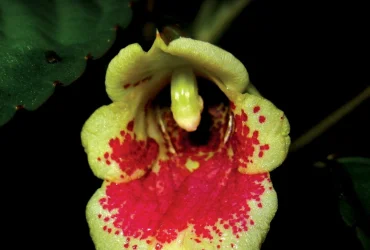 v4i2.82
v4i2.82ISSN: 1800-427X (print)
eISSN: 1800-427X (online)
DOI:10.47605/tapro.v4i2.82
Submitted date: 5 October 2012
Accepted date: 16 October 2012
Published date: 14 November 2012
Pp. 118-119.
A taxonomic note on Impatiens disotis Hooker, 1906 (Family: Balsaminaceae)
E.S.S. Kumar*, A.G. Pandurangan & P.E. Roy
*E-mail: santhoshkumares@gmail.com
The genus Impatiens consists of over 1000 species distributed in the Old World tropics and subtropics. In India, the genus is represented by more than 200 species that occur mainly in three major centers of diversity, Western Himalayas, North East India, and the Western Ghats, of which the state of Kerala harbours 72 species, most of which are rare, endangered or threatened.
Section Editor: James L. Reveal
eISSN: 1800-427X (online)
DOI:10.47605/tapro.v4i2.82
Submitted date: 5 October 2012
Accepted date: 16 October 2012
Published date: 14 November 2012
Pp. 118-119.
A taxonomic note on Impatiens disotis Hooker, 1906 (Family: Balsaminaceae)
E.S.S. Kumar*, A.G. Pandurangan & P.E. Roy
*E-mail: santhoshkumares@gmail.com
The genus Impatiens consists of over 1000 species distributed in the Old World tropics and subtropics. In India, the genus is represented by more than 200 species that occur mainly in three major centers of diversity, Western Himalayas, North East India, and the Western Ghats, of which the state of Kerala harbours 72 species, most of which are rare, endangered or threatened.
Section Editor: James L. Reveal
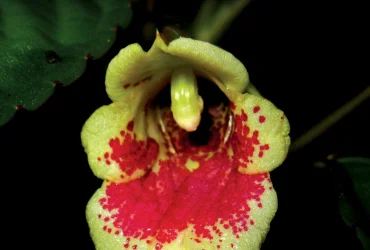 v4i2.81
v4i2.81ISSN: 1800-427X (print)
eISSN: 1800-427X (online)
DOI:10.47605/tapro.v4i2.81
Submitted date: 16 June 2012
Accepted date: 3 July 2012
Published date: 14 November 2012
Pp. 117.
Cannibalism of Indian Palm Squirrel (Funambulus palmarum)
G.M. Edirisinghe* & B.S.A.T.H. Sudasinghe
*E-mail: hsudasinghe@gmail.com
The palm squirrel is one of the common small mammals in Sri Lanka and the Indian Palm Squirrel (Funambulus palmarum) is the commonest of all being distributed throughout the island. All palm squirrels are essentially herbivores, however diet varies depending on the species. F. palmarum has a broad, opportunistic diet, consuming a range of foods that vary depending on season. Its diet includes nuts, a range of seeds, fruits, flowers, young shoots, barks, lichens and it occasionally eats insects such as termites and beetles.
Section Editor: Colin A. Chapman
eISSN: 1800-427X (online)
DOI:10.47605/tapro.v4i2.81
Submitted date: 16 June 2012
Accepted date: 3 July 2012
Published date: 14 November 2012
Pp. 117.
Cannibalism of Indian Palm Squirrel (Funambulus palmarum)
G.M. Edirisinghe* & B.S.A.T.H. Sudasinghe
*E-mail: hsudasinghe@gmail.com
The palm squirrel is one of the common small mammals in Sri Lanka and the Indian Palm Squirrel (Funambulus palmarum) is the commonest of all being distributed throughout the island. All palm squirrels are essentially herbivores, however diet varies depending on the species. F. palmarum has a broad, opportunistic diet, consuming a range of foods that vary depending on season. Its diet includes nuts, a range of seeds, fruits, flowers, young shoots, barks, lichens and it occasionally eats insects such as termites and beetles.
Section Editor: Colin A. Chapman
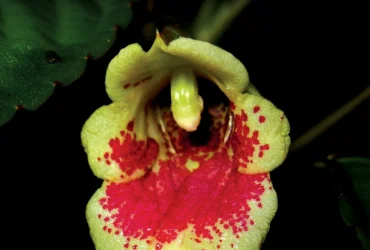 v4i2.80
v4i2.80ISSN: 1800-427X (print)
eISSN: 1800-427X (online)
DOI:10.47605/tapro.v4i2.80
Submitted date: 29 May 2012
Accepted date: 10 August 2012
Published date: 14 November 2012
Pp. 112–116.
Rhesus macaque and associated problems in Himachal Pradesh - India
V. Singh* & M.L. Thakur
*E-mail: proliterate@yahoo.com
Conflict between humans and primates is common and increasing. Of the nearly 225 living species of nonhuman primates, three Indian species (i.e., rhesus macaque (Macaca mulatta), bonnet macaque (Macaca radiata) and the hanuman langur (Semnopithecus entellus) have become urbanized. Out of these, rhesus macaques and hanuman langur share food and space with humans in rural and urban areas and are often reported in conflict with humans. Conflicts often occur when these primates raid crops of farmers
Section Editors: Colin Chapman & Lee Harding
eISSN: 1800-427X (online)
DOI:10.47605/tapro.v4i2.80
Submitted date: 29 May 2012
Accepted date: 10 August 2012
Published date: 14 November 2012
Pp. 112–116.
Rhesus macaque and associated problems in Himachal Pradesh - India
V. Singh* & M.L. Thakur
*E-mail: proliterate@yahoo.com
Conflict between humans and primates is common and increasing. Of the nearly 225 living species of nonhuman primates, three Indian species (i.e., rhesus macaque (Macaca mulatta), bonnet macaque (Macaca radiata) and the hanuman langur (Semnopithecus entellus) have become urbanized. Out of these, rhesus macaques and hanuman langur share food and space with humans in rural and urban areas and are often reported in conflict with humans. Conflicts often occur when these primates raid crops of farmers
Section Editors: Colin Chapman & Lee Harding
Hubungi Kami
The ultimate aim of the journal is to provide an effective medium for communication of the latest and best scientific information.
Copyright © 2020 Taprobanica. All Rights Reserved
Jasa Pembuatan Website by IKT




